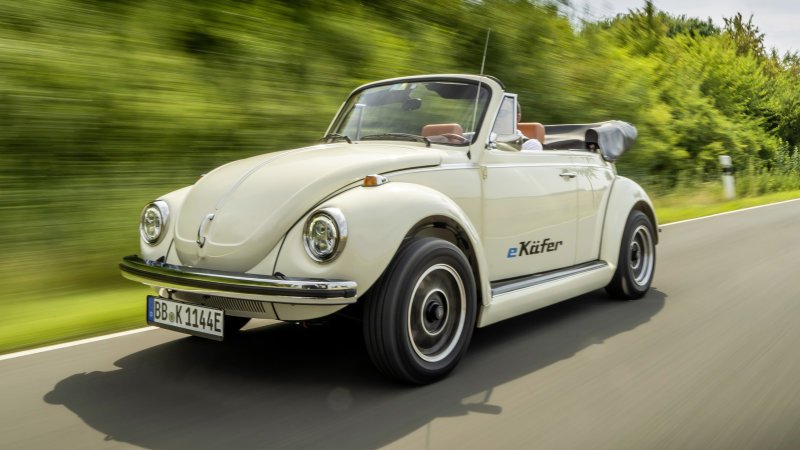Vintage-car powerhouse denounces EV-swapped classics

One of the largest global organizations representing classic car owners and enthusiasts has firmly denounced the increasingly popular practice of converting a vintage, piston-engined vehicle to run on electricity. It defiantly argued electrified classics no longer qualify as historic vehicles.
The 53-year old Fédération Internationale des Véhicules Anciens (FIVA), which represents about two million enthusiasts in 65 countries, explained that electric conversions run afoul of its goal to preserve historic vehicles. It added that smell, sound, and driving behavior are part of the experience of driving a classic car. Swapping a Tesla Model 3 drivetrain into an old Beetle might make it quicker than a modern-day GTI and nearly maintenance-free, but that's not what an air-cooled Volkswagen should be about.
The organization shot down the argument that running a classic on electricity significantly reduces air pollution, by pointing out the average classic car owner drives less than 1,500 miles annually. That inevitably has some impact on the environment, but so does manufacturing and shipping a lithium-ion battery pack.
"It is not, in our opinion, the shape or body style of a vehicle that makes it historic, but the way in which the entire vehicle has been constructed and manufactured in its original form," summed up Tiddo Bresters, FIVA's vice president of legislation.
Electric classic conversions are gaining traction around the world. Jaguar unveiled the battery-powered E-Type Zero in 2017, and pointed out that the powertrain fits in other vintage Jags, like the XJ. California-based Icon has built several EVs, including one based on a 1949 Mercury, and Volkswagen teamed up with the German firm eClassics to make classic Beetles that run on electricity (pictured). The list of companies that specialize in electric swaps grows annually, especially in Europe.
FIVA pointed out enthusiasts are free to decide whether to swap an electric motor -- or a twin-turbocharged V8, for that matter -- into a vintage car. It goes without saying that the person paying for the car, the parts, and the labor has the final say on what goes into the engine bay, and what doesn't. It concluded by giving those who choose to take the electric route a word of advice: If you electrify a classic, make the conversion reversible so someone else can make the car stock again.
Noticias relacionadas
